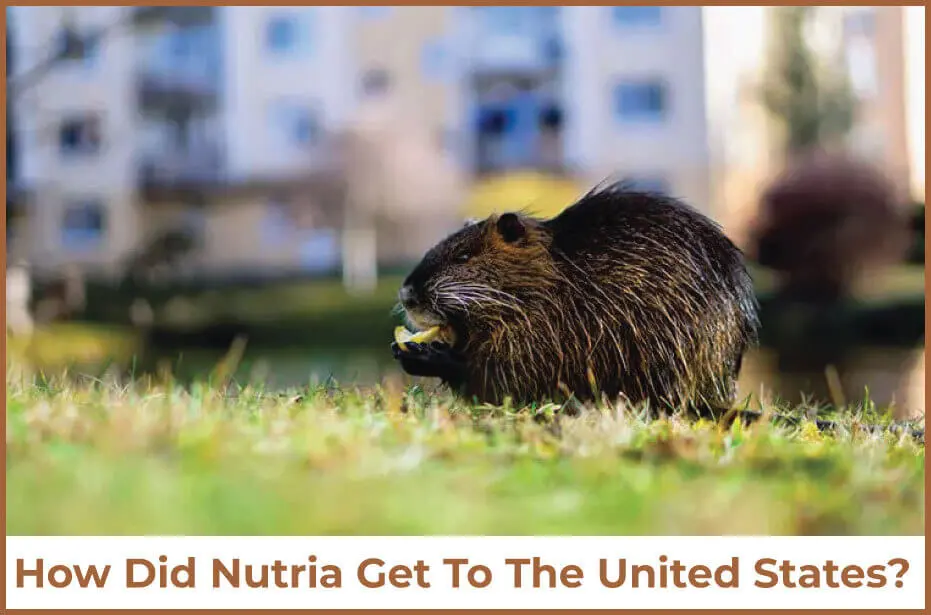
Did you know Nutria fur has had a great demand in the international fashion industry for decades? Because of their shiny, silky, and dense coat, the demand for their fur increased daily by the traders. These semi-aquatic rodents were first found in South America, and after that, they were increasingly in demand because of their fur. At that time, traders and people were unaware they were invasive and nuisance species. Before going further, let’s explore how these semi-aquatic swamp rats were introduced to the United States.
Nutria & United States: A Tale OF their Introduction
According to the FWS of the United States, the Coypus are partially aquatic rodents that were first found in South America. In 1899, they were brought to the United States by fur traders. These fur industries brought them to the U.S. because of their extraordinary fur features. The Nutria have been found in almost 20 states of the United States, most commonly in California. At that time, there was an excellent demand for fur in the fashion industry, so these rodents were introduced. In the 1940s, the demand for nutria fur was reduced, and thousands of these rodents were invaded by their non-native habitat. Besides this, many nutria farmers release them in wild habitats because they cannot feed and keep them. Unexpectedly, these rodents not only survived in their non-native habitat, but their population also grew. In the wild, they
eat weeds and vegetation and destroy crops and wetland areas on a large scale because of their burrowing habit. Therefore, they are now known as nuisance species. There were no measures for their population control at that time; therefore, they caused damage in many regions. Today, these species are found more commonly in coastal states, according to the FWS.
Learn about Nutria Lifespan.
A TimeLine About Nutria Population
1930s
It needs to be made clear whether these rodents were released intentionally or unintentionally in the marshes of Louisiana in the 1930s. After that, near the Gulf Coast, their population increased without even the help of humans. After being released in Louisiana, they continued to expand their population in 1941 from Texas to the Mississippi River.
1940s:
In the later years of the 1940s, these species gained popularity because they helped to control the aquatic weeds. Therefore, they were transplanted throughout Southeastern Louisiana, and their population grew rapidly.
1950s:
The days of the mid-1950s were the time when reports started coming about the damage caused by these species to the fields of rice, marshes, and sugarcane. Because of overgrazing and burrowing, these rodents destroyed the levees of the Mississippi River. Their population reached about 20 million at that time. They were excluded from the list of protected wildlife, when the reports came about destruction caused by them to agriculture.
1960-1980s:
Between these years, efforts were being made to manage the Nutria because of their fur demand, and they were again included in the list of protected wildlife in 1965. It is estimated that about 1.3 million of these rodents were harvested during these years because of their fur.
Mid 1980s:
This was a time when the demand for fur in the fur industry was reduced. With the reduced demand for fur trading, it became difficult for the Nutria owners to afford them. Therefore, they released them into the wild habitat. The damage reports for wetlands also started coming in.
1990s - 2000s:
It was when almost 134,000 populations of Nutria were harvested, and surveys were conducted to estimate the damage caused by these rodents. In the year 200, the U.S. Congress allowed it to provide funds for research studies on Nutria. In 2002, a report on the control method of Myocastor Coypus was completed.
Summing Up!
Nowadays, they are also kept as pets because of their soft fur and unique appearance. But it is indisputable that these swamp rats have damaged agriculture and fields of rice or sugarcane. In addition to living in their non-native habitat, they survived and thrived in that area. The damage these aquatic rats have caused was managed by wildlife services.

